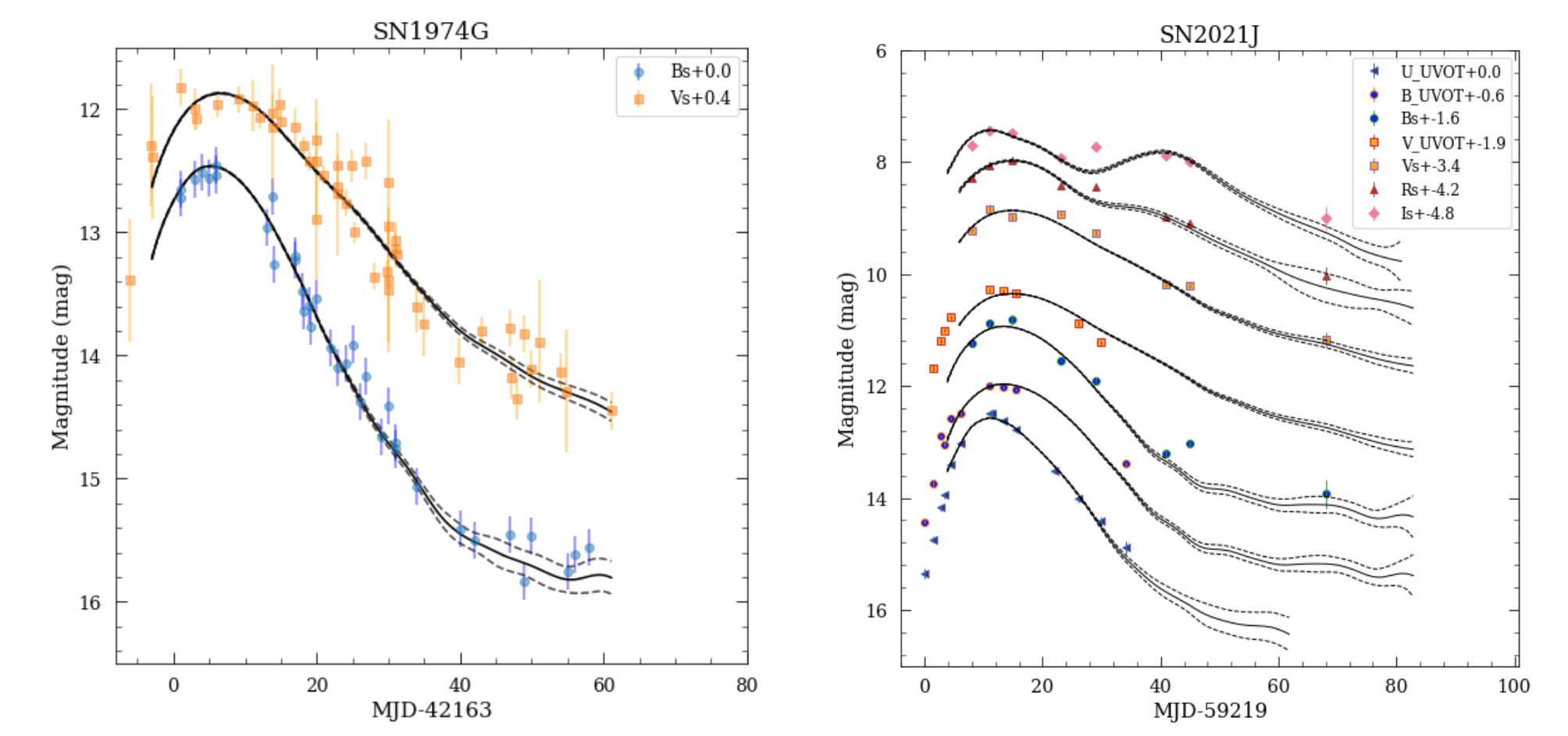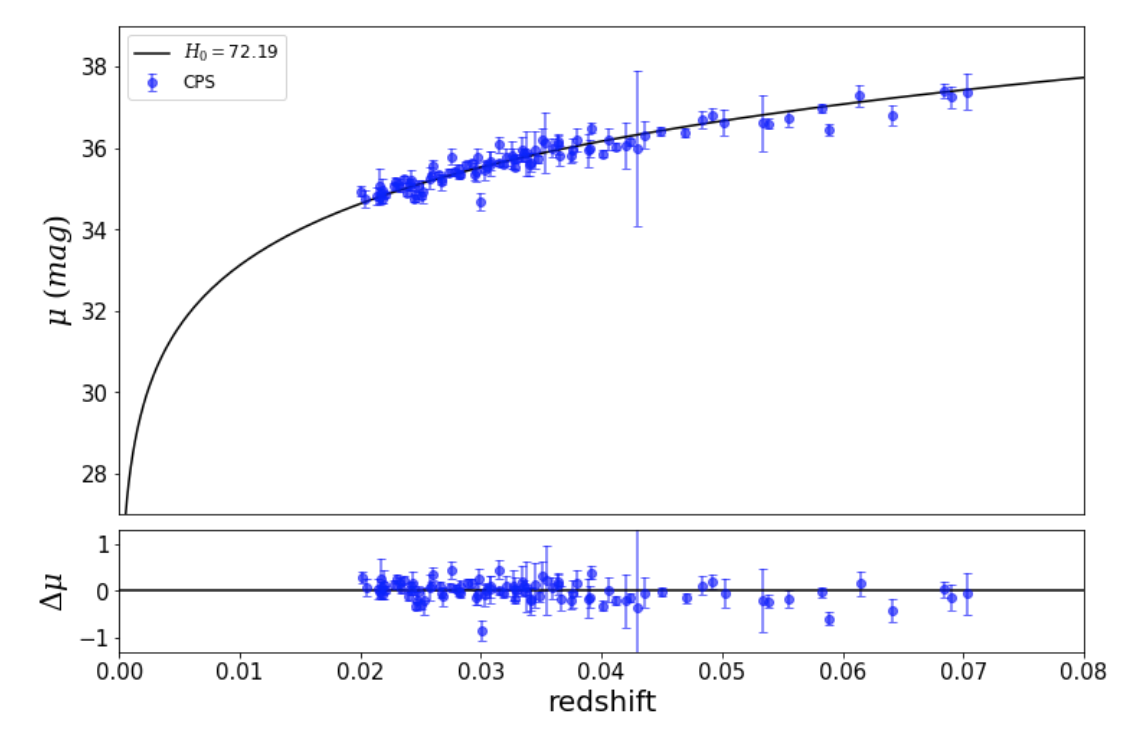Results
The Hubble constant from two sibling Type Ia supernovae in the nearby galaxy NGC 4414: SN 1974G and SN 2021J
Abstract. Having two “sibling” Type Ia supernovae (SNe Ia) in the same galaxy offers additional advantages in reducing a variety of systematic errors involved in estimating the Hubble constant, H0. NGC 4414 is a nearby galaxy included in the Hubble Space Telescope Key Project to measure its distance using Cepheid variables. It hosts two sibling SNe Ia: SN 2021J and SN 1974G. This provides the opportunity to improve the precision of the previous estimate of H0, which was based solely on SN 1974G. As part of the SN2 project, we present new optical BVRI photometry of SN 2021J obtained at the Sierra Nevada Observatory (OSN, Granada, Spain), and complement it with Swift UVOT UBV data, which cover the first 70 days of emission. The main SN luminosity parameters for the two sibling SNe are obtained by using SNooPy, a light curve fitting code based on templates (see Figure 1). Using a hierarchical bayesian approach, we build the Hubble diagram with a sample of 96 SNe Ia obtained from the Combined Pantheon Sample in the redshift range z = 0.02 − 0.07, and calibrate the zero point with the two sibling type-Ia SNe in NGC 4414 (see Figure 2). We report a value of the Hubble constant H0 = 72.19 ± 2.32 (stat.) ±3.42 (syst.) km s−1Mpc−1.
(see more info in Gallego-Cano et al. 2022)

